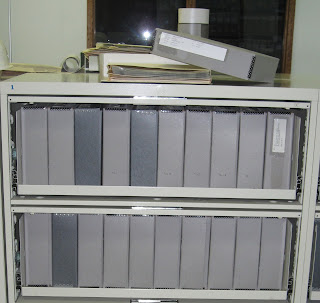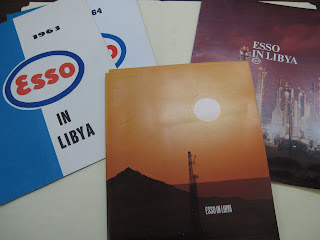Last week, I attended the Society of Southwest Archivists' 2011 Annual Conference in Little Rock, Arkansas. The theme this year was "Opportunity and Promises: Advocating Archives."

Above: The cake!
Before I even mention what I learned (lots!), I want to tell you about Little Rock and the Peabody Hotel. Downtown Little Rock is completely charming, lying adjacent to the Arkansas River, lined with gardens, restaurants and shops.

Above: Arkansas capitol in downtown Little Rock.

Above: A gazebo near the hotel, by the river.

Above: View of the Peabody Hotel from a sculpture garden.
What's unusual for the hotel is that they have real-life ducks living in the lobby. The ducks (about 5 of them) spend the majority of the day, from 11:00 a.m. to 5:00 p.m. in a dedicated fountain in the hotel's lobby. At 5:00 p.m., the Duck Master leads the ducks to their own Duck Palace where they spend the night. Check out the legend
here.

Above: The male Mallard duck in the hotel's lobby.

Above: The Duck Master leads the ducks to their palace.
The conference offered several sessions relevant to my duties at the Petroleum Museum. In fact, I was even a presenter during one session, "Filling Our Niche: Opportunity and Promise in Subject Repositories," with Mary McLain Saffell from the
Vietnam Archive at Texas Tech University and Melissa Gottwald from the
Aviation Safety and Security Archives at Embry-Riddle Aeronautical University. We each talked about our respected subject-based repositories, or archives, and about some of the opportunities and challenges we've faced. I found it interesting to learn about archives and what they acquire and do with their holdings.
Other sessions I attended included:
*
Keynote -- Listen Up: Voices from the Archives, Elliot WestDr. West was a very engaging speaker; he spoke about finding "lost" voices within archival holdings and gave many examples of his personal finds.
*
If You Love Your Collections, Set Them Free: Using the Web to Facilitate AccessThe
Lyndon B. Johnson Presidental Library & Museum, the
Dolph Briscoe Center for American History, the
Texas Archive of Moving Images, and
Frazar Memorial Library, McNeese State University in Lousiana, are all doing fabulous and intriguing work using their collections online in a variety of ways. Main nugget: can't just sit there, find ways to be relevant!
* Grant Funding for Library, Archive and Museum ProjectsExperts in the field of grantwriting and funding presented this resourceful session. Federal and foundational support is out there. You just have to ask and, if that does not succeed, ask again and again.
* Doing More with DSpaceDSpace is software intended to be a preservation warehouse for digital objects. (We use it for our Train to Share project.) However, there are other software out there, like Omeka and Pacyderm, to provide an interactive interface for users like you! Preservation is one side of the coin, with access the other.
One last thing ... we had a reception at the William Clinton Presidental Library, just a mile away from the hotel. We were able to visit the exhibits and even had the opportunity for a behind-the-scenes tour! Below are some photos from that event.




The museum storage door has a knocker on it!





















 Meet Ms. Priscilla Jeffries.
Meet Ms. Priscilla Jeffries.
 Meet Mr. Morris Bassham.
Meet Mr. Morris Bassham.